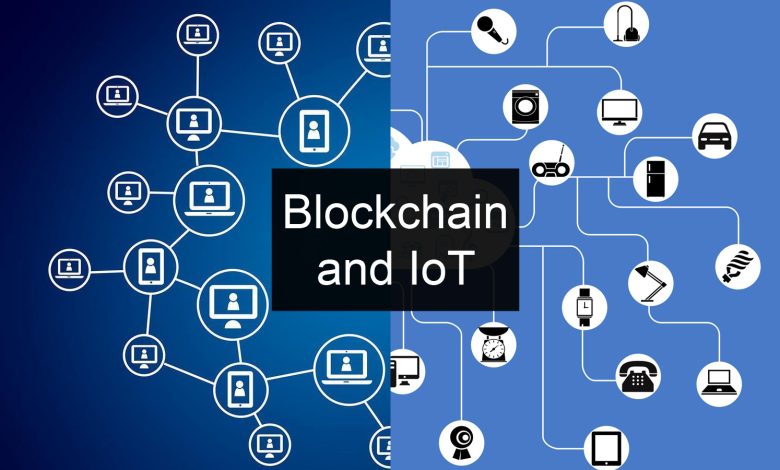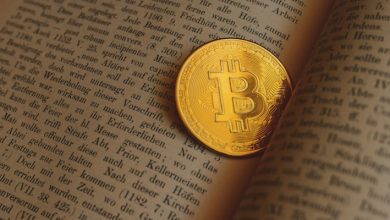How IoT and Blockchain Can Work Together

- Understanding the basics of IoT and Blockchain technology
- Exploring the potential benefits of combining IoT and Blockchain
- Challenges and opportunities in integrating IoT and Blockchain
- Real-world applications of IoT and Blockchain synergy
- Security considerations when implementing IoT and Blockchain solutions
- Future trends in the convergence of IoT and Blockchain
Understanding the basics of IoT and Blockchain technology
The Internet of Things (IoT) and Blockchain technology are two innovative concepts that have the potential to revolutionize various industries. Understanding the basics of these technologies is crucial to grasp how they can work together seamlessly.
IoT refers to the network of interconnected devices that can communicate and share data without human intervention. These devices can range from smart home appliances to industrial sensors, all collecting and transmitting valuable information.
On the other hand, Blockchain is a decentralized and secure digital ledger that records transactions across a network of computers. Each transaction is stored in a “block” and linked together in a chain, creating a transparent and tamper-proof record.
When IoT and Blockchain are combined, they can enhance the security, transparency, and efficiency of data transactions. IoT devices can securely record data on the Blockchain, ensuring that information is accurate and cannot be altered without consensus.
By leveraging Blockchain technology, IoT devices can establish trust among themselves, enabling secure peer-to-peer transactions without the need for intermediaries. This can streamline processes, reduce costs, and mitigate the risk of fraud or data manipulation.
Exploring the potential benefits of combining IoT and Blockchain
The combination of IoT and Blockchain technology has the potential to revolutionize various industries by enhancing security, transparency, and efficiency. By leveraging the decentralized and immutable nature of Blockchain, IoT devices can securely communicate and transact with each other without the need for intermediaries. This can lead to a more streamlined and cost-effective process for data exchange and transactions.
One of the key benefits of combining IoT and Blockchain is the enhanced security it provides. With Blockchain’s cryptographic algorithms and distributed ledger system, data transmitted between IoT devices can be securely stored and verified. This reduces the risk of data breaches and tampering, ensuring the integrity and confidentiality of information exchanged.
Furthermore, the transparency offered by Blockchain technology allows for greater accountability and traceability in IoT networks. Each transaction or data exchange is recorded on the Blockchain, creating an immutable audit trail that can be accessed and verified by all parties involved. This can help in identifying and resolving any discrepancies or disputes that may arise.
Another advantage of integrating IoT with Blockchain is the potential for increased efficiency and automation. Smart contracts, which are self-executing contracts with the terms of the agreement directly written into code, can be utilized to automate processes and transactions between IoT devices. This can help in reducing manual intervention, minimizing errors, and speeding up the overall process.
Challenges and opportunities in integrating IoT and Blockchain
Integrating IoT and Blockchain presents both challenges and opportunities for businesses looking to leverage the combined power of these technologies. One of the main challenges is the complexity of integrating two relatively new and rapidly evolving technologies. Companies need to ensure that they have the necessary expertise and resources to successfully implement and manage IoT and Blockchain solutions.
On the other hand, the integration of IoT and Blockchain offers numerous opportunities for businesses to enhance security, transparency, and efficiency in their operations. By combining the real-time data collection capabilities of IoT devices with the immutable and decentralized nature of Blockchain technology, companies can create new business models and improve existing processes.
One of the key challenges in integrating IoT and Blockchain is ensuring interoperability between devices and networks. Companies need to develop standards and protocols that allow IoT devices to communicate securely and seamlessly with Blockchain networks. Additionally, they must address scalability issues to accommodate the growing number of connected devices and transactions.
Despite these challenges, the integration of IoT and Blockchain presents significant opportunities for businesses across various industries. From supply chain management to healthcare to smart cities, the combination of IoT and Blockchain can revolutionize how data is collected, stored, and shared. Companies that successfully navigate the challenges and capitalize on the opportunities of integrating IoT and Blockchain stand to gain a competitive advantage in the digital economy.
Real-world applications of IoT and Blockchain synergy
The synergy between IoT and Blockchain technology opens up a wide range of real-world applications that can revolutionize various industries. By combining the decentralized and secure nature of Blockchain with the connectivity and data collection capabilities of IoT devices, new possibilities emerge for enhancing efficiency, transparency, and security.
One of the key areas where this synergy can be leveraged is in supply chain management. By using IoT sensors to track the movement and condition of goods in real-time, and storing this data on a Blockchain for immutable record-keeping, companies can ensure transparency and traceability throughout the supply chain. This can help in preventing fraud, reducing errors, and improving overall efficiency.
Another important application is in the field of smart energy management. IoT devices can be used to monitor energy consumption in real-time, while Blockchain technology can enable secure and transparent energy trading between consumers. This can lead to a more efficient use of resources, reduced costs, and increased sustainability.
Furthermore, the combination of IoT and Blockchain can also be beneficial in the healthcare industry. By securely storing patient data on a Blockchain and using IoT devices for remote monitoring and data collection, healthcare providers can ensure the privacy and integrity of sensitive information while improving the quality of care through real-time insights.
In conclusion, the synergy between IoT and Blockchain technology has the potential to transform various industries by enhancing efficiency, transparency, and security. By leveraging the strengths of both technologies, companies can unlock new opportunities for innovation and growth in the digital age.
Security considerations when implementing IoT and Blockchain solutions
When implementing IoT and Blockchain solutions, it is crucial to consider various security aspects to ensure the protection of data and devices. Here are some key security considerations to keep in mind:
- Encryption: Utilize strong encryption algorithms to secure data transmission and storage, preventing unauthorized access.
- Authentication: Implement robust authentication mechanisms to verify the identity of users and devices interacting with the system.
- Access control: Define and enforce access control policies to restrict unauthorized users from accessing sensitive information.
- Device security: Secure IoT devices with unique identifiers, regular software updates, and secure boot mechanisms to prevent tampering.
- Blockchain consensus: Choose a secure consensus mechanism in the Blockchain network to ensure the integrity and immutability of transactions.
- Smart contracts: Audit and validate smart contracts to eliminate vulnerabilities and ensure the execution of secure transactions.
By addressing these security considerations, organizations can mitigate risks and build a robust IoT and Blockchain ecosystem that protects data and maintains trust among stakeholders.
Future trends in the convergence of IoT and Blockchain
The future trends in the convergence of IoT and Blockchain are promising, with both technologies poised to revolutionize various industries. One key trend is the increased integration of IoT devices with blockchain networks to enhance security and data integrity. This integration allows for secure and tamper-proof data transmission and storage, ensuring the trustworthiness of IoT-generated data.
Another trend is the rise of decentralized IoT platforms powered by blockchain technology. These platforms enable direct peer-to-peer communication between IoT devices, eliminating the need for intermediaries and reducing costs. By leveraging smart contracts on the blockchain, IoT devices can autonomously interact with each other based on predefined conditions, leading to more efficient and automated processes.
Furthermore, the combination of IoT and blockchain is driving innovation in supply chain management. By utilizing blockchain’s transparent and immutable ledger, companies can track the movement of goods in real-time, ensuring authenticity and preventing fraud. IoT sensors embedded in products can provide valuable data that is securely recorded on the blockchain, enabling end-to-end visibility and traceability.
Overall, the convergence of IoT and blockchain is opening up new possibilities for secure and efficient data exchange, automation, and transparency. As these technologies continue to evolve and mature, we can expect to see even more groundbreaking applications that will reshape the way we interact with the digital world.



